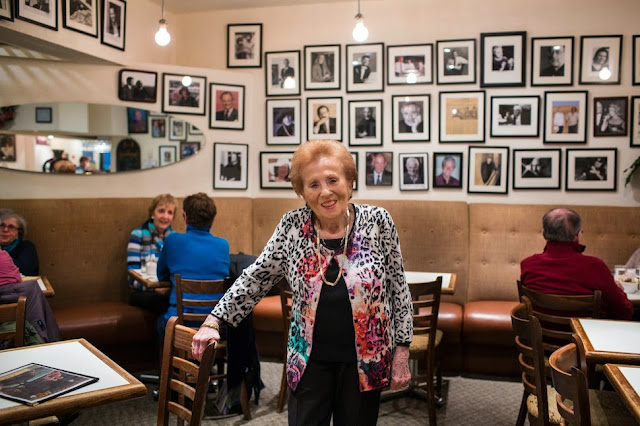Artisans' Market at the Western Fair Farmers' Market is London's Answer to the Big City Flea
Hunter's Precious Metals
Junction Flea in Toronto
London's Old East Village is home to a row of second-hand,
vintage, retro and quasi- antique stores, attracting a diverse clientele of
vintage aficionados, collectors, dealers and people who have a growing
awareness and appreciation for the 20th century decorative arts and
like to score a deal.
There is also a diverse vendors market on the 2nd
floor of the Western Fair Farmers' Market on Saturdays known as the Artisans’
Market – which is similar to the big city fleas, (think the Brooklyn Flea or the Junction Flea in Toronto), that are popping up in neighbourhoods all over
major urban centres. The 2nd floor
market is also home to the Fire Roasted Coffee roastery and the On the Move Organic production
facility, and several other niche culinary businesses like Kosuma Foods,
Everything Tea and Dessert Buns.
Over the last few years the ever-changing 2nd
floor Artisans' Market has been a minimal-risk testing ground and business
incubator for budding entrepreneurs to try out their ideas. The Artisans' Market
has been purposefully curated and has evolved to offer an alternative to the
traditional retail experience. Surprisingly, after eight years, many patrons of the Farmers' Market are still unaware of the Artisans' Market vendors who represent just less than half
of the 100 or so permanent vendors at the Western Fair Farmers’ Market.
According to
the New York Times, “Flea markets proliferate a volume of goods needing to be
sold and people who are hungry — emotionally and aesthetically — to sort out
the meaning of life,” said Michael Prokopow, a history professor at the Ontario
College of Art and Design University in Toronto, who teaches a course called
“Stuff,” about things and their meaning. “For most people who go on these
ritualized scavenger hunts looking for something that they may not know exists,
it is a kind of pilgrims’ process through the detritus of the past.”
It also hasn’t
gone unnoticed that the rise of some of the hipper, trendier urban “fleas” and
pop-ups have coincided with the "shop local", do-it-yourself and culinary artisan
movements.
Paul Smith, a
knowledgeable steward of modernism, operates the Mid-century Modern Market booth in
the far left corner of the Artisans' Market. Smith retails a diversity of vintage
and mid-century pieces. His small but ever-changing
selection includes everything from vintage Scandinavian and Murano art glass,
Italian and German ceramics, Lotte lamps, vintage upholstery, unique teak
furniture to pieces from elite Danish furniture craftsmen and designers such as
Finn Juhl and Freme Rojle. Other furniture classics include designers Florence
Knoll, Charles Eames, Eero Saarinen and George Nelson.
An example of a typical collector is my friend Peter who has an impressive
collection of period household appliances, kitchenware and culinary artifacts. Peter
is hot-wired with the idiosyncratic impulse that drives most collectors. In
this particular case, the search for craftsmanship, state-of-the-art design,
technological innovation and kitsch all contribute to his collection. Part of the
appeal for the collector is the hunt itself as well as an educational pursuit.
In fact, there is a room in his spacious split-level home
that resembles a small museum. Perhaps this display is better described as a
time capsule, where the artifacts are on a kind of private permanent show and
tell. It is in this subterranean room that our curator wears different hats:
curator, guardian, repairman and spokesperson.
The first time I saw the collection assembled, I was
surprised by the ingenuity and commitment required to accumulate such a vast
array of formerly neglected, mainly forgotten objects that appeared to have
been abandoned with no regard for their artistic vanguard, utility, social or
historical interest.
Considered passé by today’s mass manufacturing standards,
many of the household items do not suffer modern built-in product obsolescence,
surviving intact from the ravages of time and use. Peter’s collection is a
compilation of durable and highly-stylized vacuum cleaners, futuristic coffee
percolators, toasters, blenders, mix masters, can-openers, food processors,
tools, kitchen gee-gaws and gadgets purchased at flea markets and second hand
stores.
Speaking of tools, Bud, (who just celebrated his 90th birthday), and Marian’s booth across from
Smith’s Mid-century Modern Market has an interesting selection of hard-to-find
vintage and antique tools.
I often see the stylish Forest City Fashionista at the Artisans' Market. She has
turned her obsession with unique and high fashion clothing and photography into
a blog, scoping out vintage fashion and accessories from the vendors like Faye’s
at Passion 4 Fassion.
The Artisans’ market is also a great place to find culinary ephemera - almanacs, church and promotional cook booklets,
product and marketing brochures, recipe leaflets and other printed food-related
information that have been historically given away gratis or sold at a nominal
cost.
Culinary ephemera make fascinating and informative
reading. In addition to general knowledge and practical homespun advice, they
provide a unique historical perspective and social commentary offering
solicited testimonials, helpful household hints, cooking secrets and
entertaining rules of etiquette.
The increased awareness and interest in environmental
sustainability in terms of reusing, recycling, repurposing and repairing,
rather than just giving unwanted items the heave-ho, makes a lot of sense and
not just because we are in economically challenging times.
The next time you are visiting the Western Fair Farmers' Market be sure to visit the 2nd floor.
Be sure to check out the Forest City Fashionista's Blog.
Be sure to check out the Forest City Fashionista's Blog.











Comments
Post a Comment